Emperor Claudius has gone down in history, above all, for his physical defects (portrayed by Robert Graves in two successful novels, I, Claudius and Claudius, the god, and his wife Messalina , both adapted to a prestigious television series), for having managed to survive -and succeed- Caligula, and for probably dying of poison, perhaps by his wife so that the throne would pass to his son Nero. But apart from that, the construction of a new port in Ostia is usually cited as one of the milestones of his reign of prosperity:the so-called Portus.
Ostia Antica was the name of an ancient city located on the coast of the Tyrrhenian Sea, in the middle of the Italian peninsula. Very close to Rome, about twenty-five kilometers.
In fact, it is believed that it was possibly the first colony of the metropolis and its foundation, dating from the 7th century BC, was attributed to Anco Marcius, the last king of Sabine origin, whose stage was characterized precisely by a policy of expansionism that led to the conquest of Lazio.
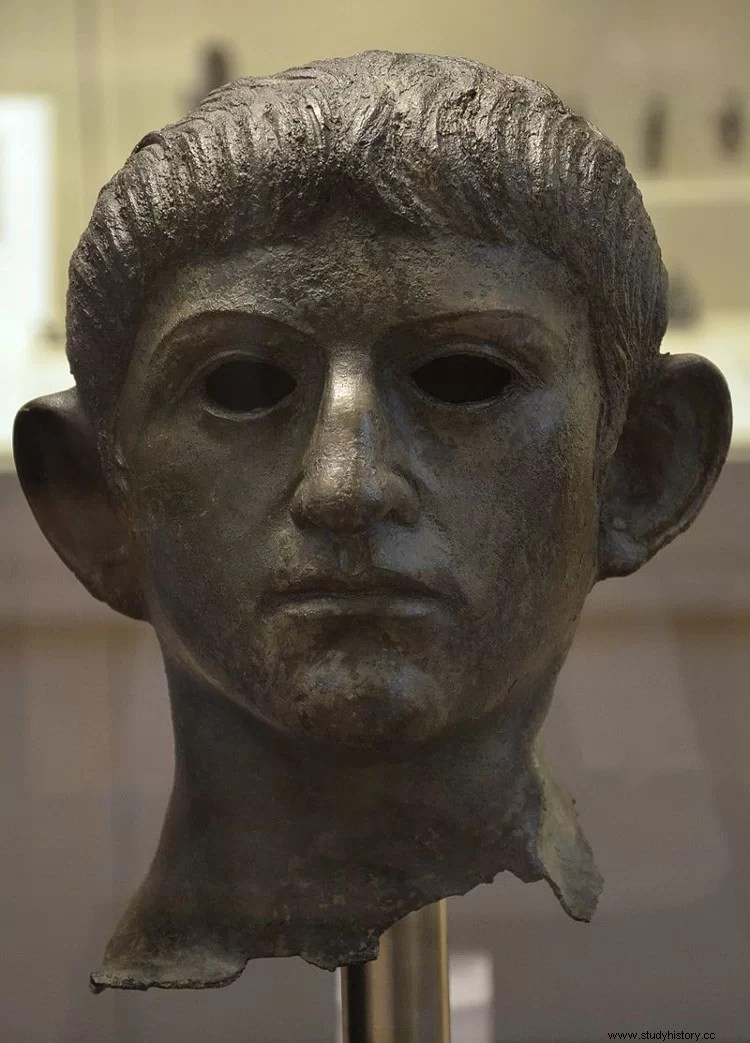
In addition, Marcius carried out an extensive program of infrastructure construction that included the Sublicious Bridge, the Janiculum fortifications, the first prison, a salt pan and the port of Ostia. The latter initially had a purely defensive function, protecting the entrance to the Tiber to prevent a possible enemy from going up the river and reaching the city (its very name alludes to its location at the mouth of the Tiber).
In those early days, the radius of action was basically local and terrestrial; Rome was still a long way from becoming a maritime power.
Most of the ruins that remain in Ostia date back to the 3rd century BC:the so-called Castrum and Capitolio, which today are inland due to sedimentation. However, in the year 87 B.C. Marius laid waste to the city during his war against Sulla, and, after a devastating new pirate attack two decades later, which led Pompey to request the Lex Gabinia , which authorized the formation of a squad to combat the aggressors, had to be rebuilt with due police measures.
Tiberius enlarged it by endowing it with a forum, but it was during Claudius' mandate that he made the definitive leap with the construction of the new port.
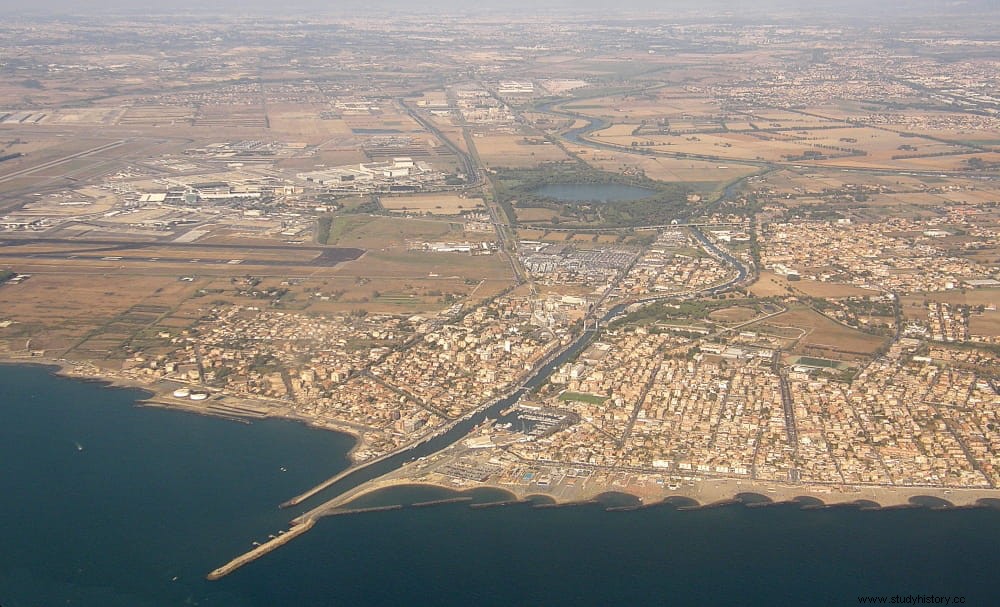
Actually, the first idea had come from Julius Caesar, who considered it necessary to guarantee the supply of grain and oil to Rome by sea and therefore proposed to open a canal from Tarracina equipped with docks. By then, river debris was already beginning to accumulate at the mouth of the Tiber, making it difficult for ships with larger drafts to dock. In Claudius' time the problem had gotten so bad that large ships could no longer access the wharves, so the emperor reinstated the project.
Another reason was that the imperial policies of architectural embellishment of Rome also needed the large blocks of marble and stone in general that were transported there by sea, then going up the course of the river to the Porta Portese .
A good example of this was the difficulties encountered by the obelisk ship (a naval typology that, as its name indicates, was designed to move obelisks) that had to move the Egyptian obelisk that Caligula imported to install as a spina in his private circus (and which today decorates the Plaza de San Pedro).
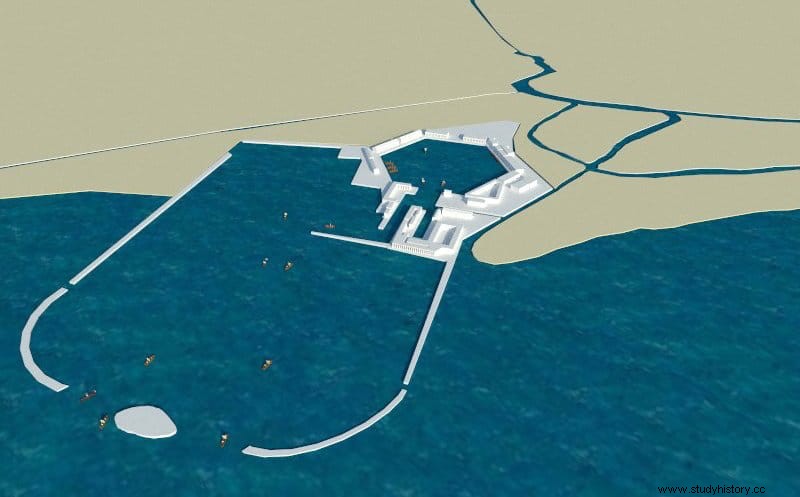
Ironically, it was the hull of that same ship that served as the basis for creating an artificial island on which a lighthouse was erected and which was located between the two elliptical jetties that extended some one hundred and seventy meters in front, protecting the enclosure from the docks and creating two entrances. At least this is deduced from the descriptions and representations found on coins.
The set, which covered a total of sixty-nine hectares, was not located exactly where the previous one but four kilometers to the north, on the right bank of the Tiber. It was open directly to the sea on one side but connected to the river through a channel on the south side, being protected from the predominant southwest wind that hit the mouth.
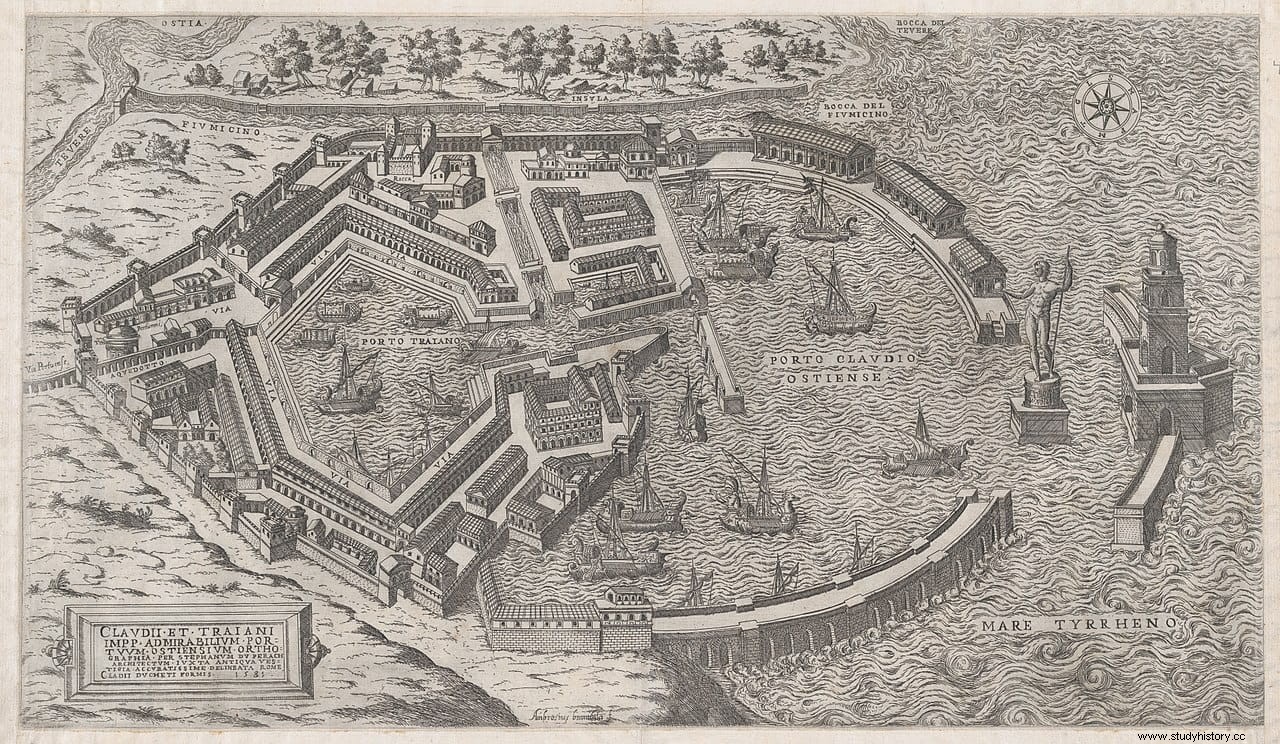
Likewise, a road called Via Portuensis was built to link the new infrastructure to Rome by land. It was twenty-four kilometers long and crossed the hills until it reached what is now Ponte Galeria and from there the plain to the city proper, passing through what would later become the Porta Portuensis (the one that crossed the Aurelian Wall) and ending at the Pons Aemilius .
In this way, there were two roads because another older one persisted, the Via Campana , which instead of going through the mountains went through the valley, following the meanders of the river and connecting Puteoli, Qualiano and Capua until joining the Via Appia .
He was baptized with the simple name of Portus (although later Nero would add Augusti ) and, in an inscription inaugurated in the year 45 A.D., Claudius said that the new infrastructure would make it possible to put an end to the frequent floods that Rome suffered due to the floods. However, only sixteen years later, Tacitus documents the sinking of several ships carrying grain while trying to enter the port during a storm. Likewise, the engineers warned the emperor that the place was not ideal because it was also subject to sedimentation.
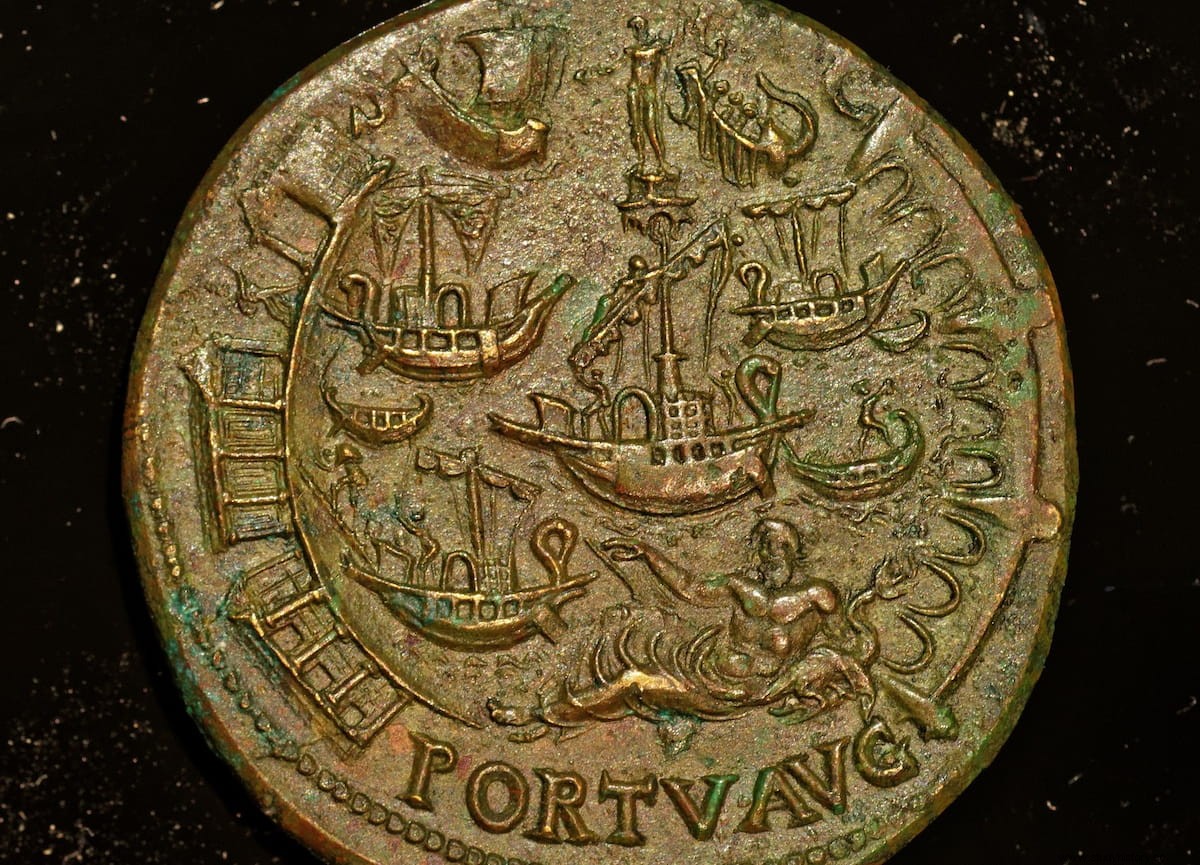
This would become clear during the reign of Trajan, when the deposited sand threatened to render the port unusable, which is why it was inevitable to undertake a series of works to solve it. It was 112 AD. and the docks were surrounded with walls, forming a thirty-nine-hectare hexagonal structure that had to cushion the impact of the waves and communicated with the previous port, with the sea and with the Tiber through channels. This hexagonal structure is today known as Fossa Traiana , despite the fact that it basically coincides with Claudio's port.
Also, Portus was linked to the original port of Ostia Antica, by another channel called Fiumara Grande that it was almost a hundred meters wide, which made it one of the largest built by Roman engineering; over time it would be forgotten until it was discovered recently, in 2010. In this sense, today you can also see the mark that Portus left on the landscape, in the form of an interior lagoon around which the archaeological remains of merchandise warehouses.
The new port remodeled by Trajan remained in service for a couple of centuries, reaching during the reign of Constantine I the Great full autonomy thanks to the fact that the site was designated episcopal seat, with its cathedral (Santa Rufina, from the 10th century) and a palace for the bishop, later converted into a fortress. It then received the official name of Civitas Flavia Costantiniana Portuensis , although it kept the most common of Portus Romae or Portus Urbis .
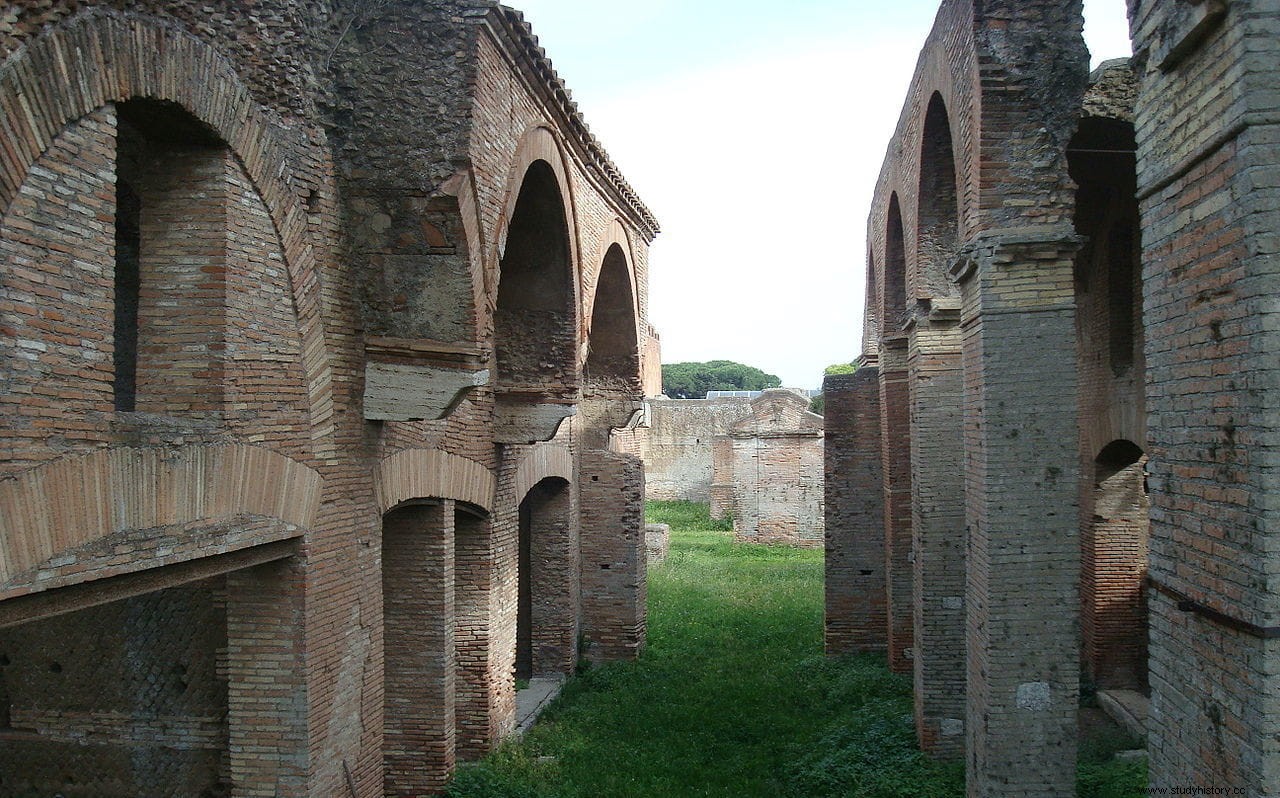
But when the Middle Ages arrived, it fell into disuse; the sedimentation on the right bank of the Tiber and the commercial crisis led it to forgetfulness that was not corrected -partially- until popes such as Gregory XIII and Paul V ordered the reopening of the Fossa Traiana in the 16th and 17th centuries respectively, and is now known as the Fiumicino Canal .
It is currently part of the Parco Archeologico di Ostia Antica , where you can see traces of the city and its wall, the pagan necropolis of Isola Sacra (another artificial island, this one created by Trajan) and a naval museum. Despite their original size, the groynes are barely recognizable in separate mounds of sand.
